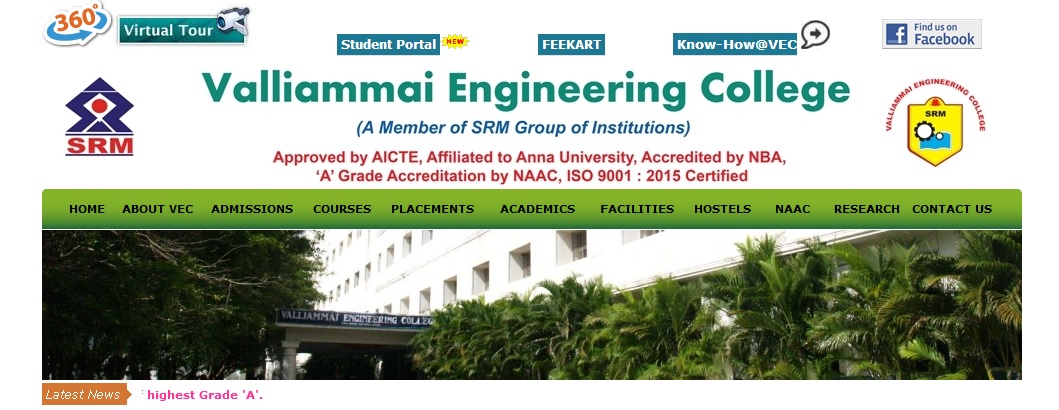ME6302 Manufacturing Technology-I B.E Question Bank : valliammai.co.in
Name of the College : Valliammai Engineering College
Subject : Manufacturing Technology-I
Subject Code : ME 6302
Website : valliammai.co.in
Document Type : Question Bank
Department : Mechanical Engineering
Semester : III
Degree : B.E
Question Bank : https://www.pdfquestion.in/uploads/valliammai.co.in/2831-ME6302-Manufacturing%20Technology-I.pdf
Valliammai Manufacturing Technology-I Question Paper
VALLIAMMAI ENGINEERING COLLEGE
DEPARTMENT OF MECHANICAL ENGINEERING
ME 6302 MANUFACTURING TECHNOLOGY – 1 (QUESTION BANK)
Unit – I
I-METAL CASTING PROCESSES
PART-A (2 MARKS)
1.Name any four types of commonly used patterns
2.What is the merit of CO2 process?
Related : Valliammai Engineering College ME2301 Thermal Engineering B.E Question Bank : www.pdfquestion.in/2833.html
3.State the essential properties of mounding sand
4. Give any two merits and demerits of investment casting process
5. Mention any two merits and demerits of die casting
7. List out any four defects in casting
8. What is meant by split pattern
9. Define the term mould
10. What are the defects caused by low pouring temperature?

11. What is meant by match plate pattern making?
12. How will you calculate grain fineness number?
13. How patterns differ from casting?
14. What are the tests carried out to determine the quality of casting?
15. What are the functions of riser?
16. What are core prints?
17. What are the functions of gating and risering?
18. What is the composition of moulding sand?
19. What is the function of core?
20. Which process is called “Lost wax process”?Why?
PART-B (16 MARKS)
1. i. Discuss the properties of moulding sand
ii. What are the various moulding methods, explain them
2. i. Explain the working principle of investment casting
ii. Discuss the casting defects and their inspection methods
3. i. What are the pattern making allowances and briefly explain them
ii. Describe centrifugal casting process
4. i. Describe the shell moulding process
ii. Explain the ceramic moulding process and state its merits and demerits
5. i. What are the factors which govern the selection of a proper material for pattern making?
ii. What are the specific advantages of match plate patterns? Explain how they are used for making mould
6. i. Classify the types of patterns and sketch any three of them
ii. What is core and explain how to make a core?
7. i. Explain the construction and operation of Cupola furnace with diagram
ii. Write a short note on “Chills”
8 .i. Describe various materials used for making patterns. What are its merits and demerits
ii. What are the basic requirements of core sand? How does it differ from the moulding sand?
9.i. What are the different types of furnace used in foundry? Describe in detail with neat sketches any one of them
ii. Describe the steps involved in the preparation of green sand mould with cope and drag pattern
10. i. Briefly explain cold-chamber die casting process with a neat sketch
ii. What are the advantages of centrifugal casting?
Unit – II
II- JOINING PROCESSES PART-A (2 MARKS)
1. What is the principle of resistance welding?
2. What is the role of fluxes in welding? Or function of flux in welding?
3. List out any four arc welding equipment.
4. What is the principle of Thermit welding?
5. What are the different types of gas flames? How are they formed?
6. Differentiate soldering and brazing .
7. What is the chemical reaction occurs in thermit welding?
8. What are the advantages of carbon arc welding?
9. Differentiate between oxy-acetylene and air-acetylene welding
10. What are the advantages of a.c. arc welding?
11. What is the principle cause of cracks in weld metals?
12. How do you specify an electrode?
13. What is the function of shielding gas in welding?
14. Why laser welding is used only for micro-welding applications?
15. Define resistance welding
16. What is flux? Why is it essential to use it in some welding situations?
17. What are the defects that are generally found in welding?
18. List any four applications of TIG Welding process.
19. Is flux necessary in Brazing process? If yes why?
20. How slag inclusions in welding be avoided?
PART-B (16 MARKS)
1. i. Distinguish between gas and arc welding
ii. What are the advantages of welding?
iii. Explain percussion welding
2. i. Describe Electro slag welding
ii. Distinguish between soldering and brazing
3..i. Explain spot welding
ii. Explain submerged are welding
4. i. Explain the electron beam welding process with a neat sketch
ii. Write a brief note on “Welding defects”
5. i. Sketch the three types of Oxy-acetylene flames and state their characteristics and applications.
ii. Describe the electro-slag welding process with a neat sketch.
6. i. What is the principle of resistance welding and explain the seam welding?
ii. Describe plasma arc welding
7. i. What are the different types of electrode? What are the functions of flux coating?
ii. What is the principle of friction welding?
8. i. Describe metal inert Gas arc welding process with a neat sketch.
ii. Briefly explain on butt welding process
9.i. Give a brief account of classification of welding processes?
ii. Explain TIG welding process variables and enumerate its advantages
10. i. Describe shielded metal arc welding process with suitable diagram. What are its applications?
ii. What is the difference between welding, brazing and soldering process?